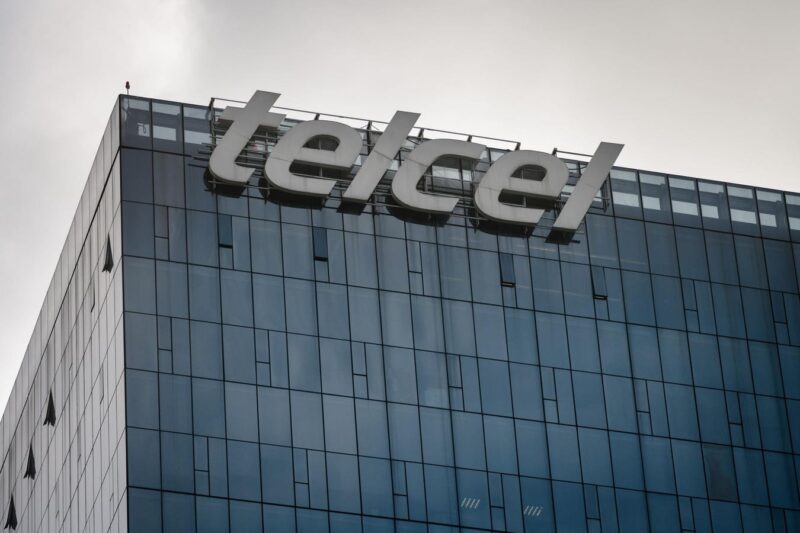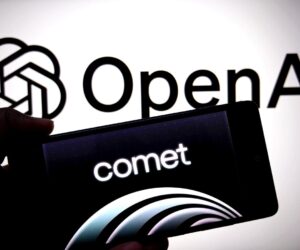America Movil’s Telcel headquarters in Mexico City, Mexico
© 2025 Bloomberg Finance LP
América Móvil is the dominant telecommunications provider across Latin America with operations that extend into Europe. The company sits within the Carlos Slim group with sister holdings in finance and in industry and retail. Its portfolio spans mobile, fixed line, broadband and television for consumers, small businesses, enterprises and governments across the region. It also owns Telekom Austria, now branded A1, which serves eight countries in Central and Eastern Europe.
The scale is matched by sustained investment. América Móvil spends $8 billion to $9 billion each year on infrastructure and technology. The result is a network that keeps pace with peers in developed markets, from 5G in major hubs to maintained 3G in select locales. As Chief Digital Intelligence Officer, Andrés Vázquez helps steer that scale toward new value. He describes himself as a “technology matchmaker” whose job is to “find what works, plug it in fast and make sure it delivers.”
A Chief Digital Intelligence Officer with a Matchmaker’s Mandate
Vázquez’s title is unusual by design. The role spans digital innovation, artificial intelligence, automation and adjacent disciplines that together form what he calls digital intelligence. Rather than build everything inside the enterprise, he searches the market for the right partners, aligns them to urgent use cases and accelerates adoption where impact is clearest. “I don’t need the trendiest solution,” he explained. “I need the one that solves a real problem this year.”
The governance reflects the company’s culture. Although América Móvil is publicly listed, the Slim family remains the principal shareholder which enables fast decisions and a frugal mindset. “You don’t spend because something is fashionable,” he said. “You spend when it works.” If a problem is best solved internally, he supports that path, but the starting point is usually outside the walls.
An Open Innovation Playbook
The approach is simple and rigorous. First, identify solutions that create new revenue by integrating value added services into the company’s massive customer base. Second, bring in tools that streamline operations such as automation and applied AI to lower capital intensity and operating expense. Third, raise customer satisfaction through better journeys, faster support and clearer offers. “Everything ties back to these three lenses,” he emphasized. “If it doesn’t fit, it doesn’t come in.”
To execute, Vázquez and a small team run a constant scan. They review thousands of companies each year, perform due diligence, select a short list that best fits the business and make introductions to operating leaders. He likens the work to “venture capital without capital.” The team mentors and guides, then steps back as the business implements and scales. Most ideas are declined. The right few advance quickly.
Sourcing the Pipeline
Vázquez begins where the money flows. He maintains relationships with leading venture firms and tracks the same signal they do from platforms like PitchBook and Crunchbase. He taps innovation hubs in Israel and China and works with universities when the horizon is longer. The aim is a balanced feed of practical solutions that can land this year plus a smaller set of bets that will matter in three to five years.
Maturity matters. “We love early founders, but we need partners who are already in market,” he underscored. Large telcos demand reliability and speed to value. Startups without traction struggle to deliver both. The company still has pilots, but it pilots with partners ready to scale.
Customer Experience Across Segments
For consumers, quality of service remains decisive. Coverage and reliability are the first test, then comes value added services that ride with the plan. The line between telco and over the top providers continues to blur. Most carriers assemble offers through alliances with media and application partners. Customers judge the whole bundle more than price per megabyte.
Andrés Vázquez of America Movil
America Movil
Small businesses present a different challenge. “The market is huge and incredibly fragmented,” he said. Many firms still run finance, human resources and point of sale on spreadsheets or basic tools. Moving them to modern applications requires specialized selling and support. The opportunity is clear, yet it demands patience and new go to market motions. Large enterprises are more straightforward but highly competitive. Some projects begin with connectivity where América Móvil leads. Others begin with software and systems integration where the partner takes point and the carrier supplies the network.
The Prepaid Revolution
Vázquez lights up when he tells the story of prepaid plans. In the mid nineteen nineties, most customers in Latin America could not qualify for postpaid plans. Without credit cards or predictable billing, adoption stalled. Inspired by prepaid public phones in Europe, Carlos Slim challenged handset makers to enable prepaid on mobile devices so customers could load value and spend down.
“We lowered the barrier to entry and unlocked the market,” Vázquez noted. The idea mirrored the Gillette model: inexpensive handles, recurring blades. Within a year and a half, the ecosystem came together and prepaid took off. He believes that shift explains much of global mobile penetration today, especially across India, Africa and Latin America. América Móvil later bought TracFone in the United States, grew it from tens of thousands of customers to tens of millions, then sold it to Verizon. Prepaid began as access. Over time, value added services and economic mobility move customers to postpaid.
Thirty Five Years of Building
Vázquez joined just after privatization when the mobile business operated in three Mexican cities with fewer than thirty thousand customers. Mentored by Southwestern Bell leaders, he helped pivot distribution from luxury boutiques to mass market channels, recruiting thousands of resellers in a few years. “We went where the customers were,” he recalls. That consumer mindset became a template for growth.
He later moved to fixed line to prepare for intense competition as long distance exclusivity ended. He built the enterprise business, launched the first internet offerings under the Prodigy brand and helped drive the shift to broadband. More recently he led the creation of streaming and music services for the mass market. The through line is motion. “I’ve rarely held the same job for long,” he offered, adding, “which is how I lived every wave from narrowband to broadband to mobile generations to AI.”
The AI Moment
Vázquez has watched many technology shifts. He believes generative AI is the most profound so far. “The speed is something I have never seen,” he said. “New companies, new models, new products every week.” He is cautious about claims of quick returns in legacy environments and emphasizes the importance of picking the right first use cases. Productivity gains are already visible through tools like Microsoft Copilot and independent AI applications, even when employees adopt them informally.
For telcos, AI expands both challenge and opportunity. The industry is often labeled a dumb pipe, yet inference at scale will not live only in distant clouds. To meet latency and cost goals, much of it must run on devices and at the edge, where carriers already excel. “We may not build foundation models,” he hoted, “but we will power the experiences that depend on them.” He expects networks, edge infrastructure and quality of experience to matter even more as everyday AI becomes ambient.
Working With Carlos Slim
Asked about Carlos Slim, Vázquez points to values. Frugality in good times and bad, discipline on expenses and ownership mindset. Close attention to operations. He describes a leader who asks detailed questions “not to micromanage, but to make sure you know your business.” He admitted that he has made mistakes across three and a half decades but hastened to add the he has never been insulted for them. “Corrections are firm and respectful,” he emphasized.
Carlos Slim Helú
Getty Images
The organization is less hierarchical than many global peers. Slim and now his son, who chairs the companies, will call deep into the ranks to learn and to push. The family’s philanthropy through the Carlos Slim Foundation reinforces a purpose beyond profit. For Vázquez, that blend of rigor and impact has defined his career. “It keeps the bar high, and the mission clear,” he emphasized.
What’s Next?
Andrés Vázquez has lived the modern history of Latin American telecom and much of the internet era. His mandate today is to find what works in the market, plug it into one of the world’s largest networks and do it with speed and prudence. He believes the next chapter will be written at the edge where intelligence meets connectivity in real time.
The matchmaker has plenty of dancing partners. The art is choosing the few that matter now, then moving fast enough to turn possibility into performance.
Peter High is President of Metis Strategy, a business and IT advisory firm. He has written three bestselling books, including his latest Getting to Nimble. He also moderates the Technovation podcast series and speaks at conferences around the world. Follow him on Twitter @PeterAHigh.








